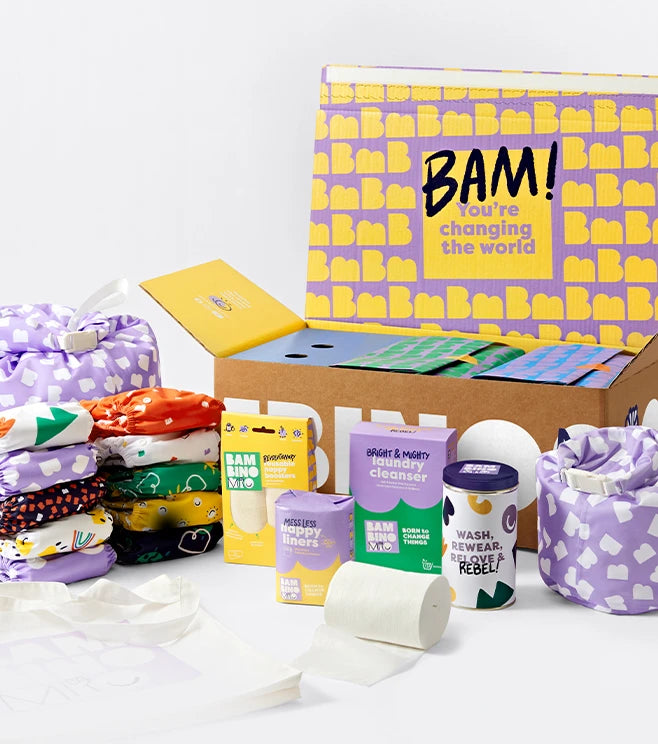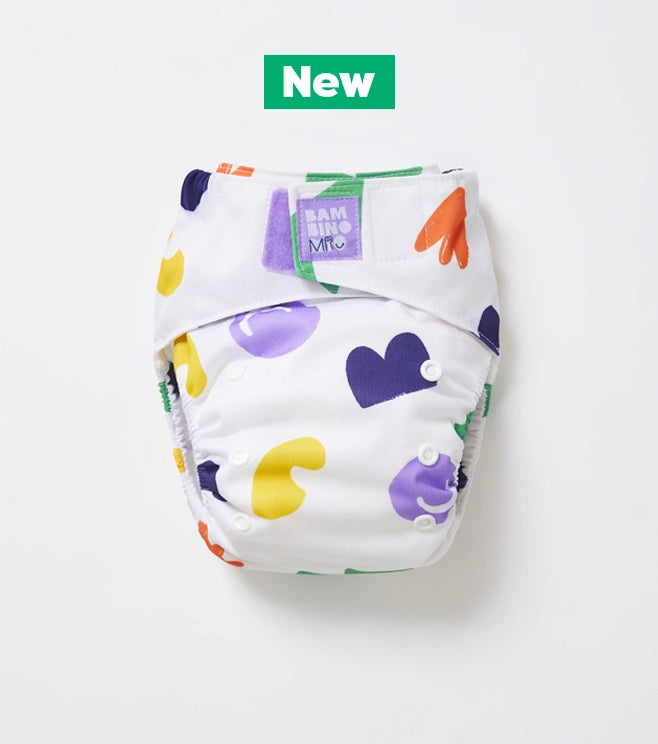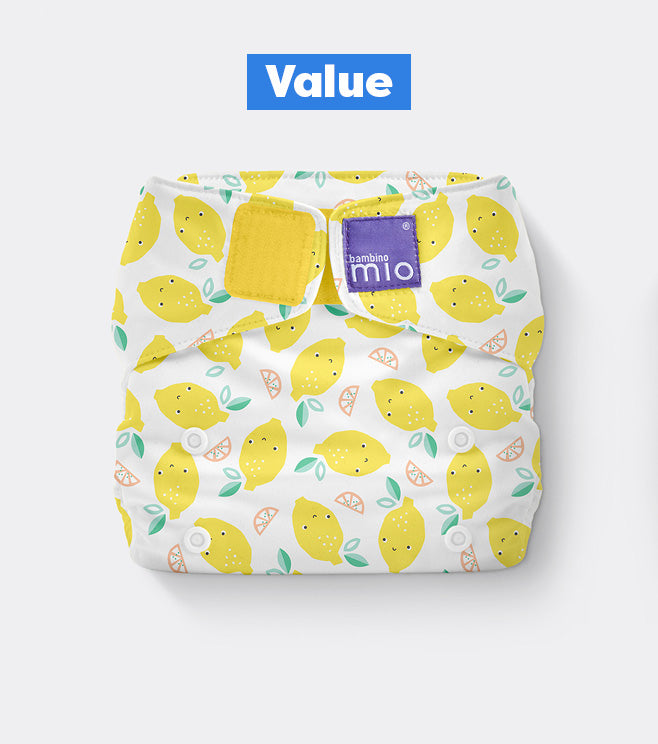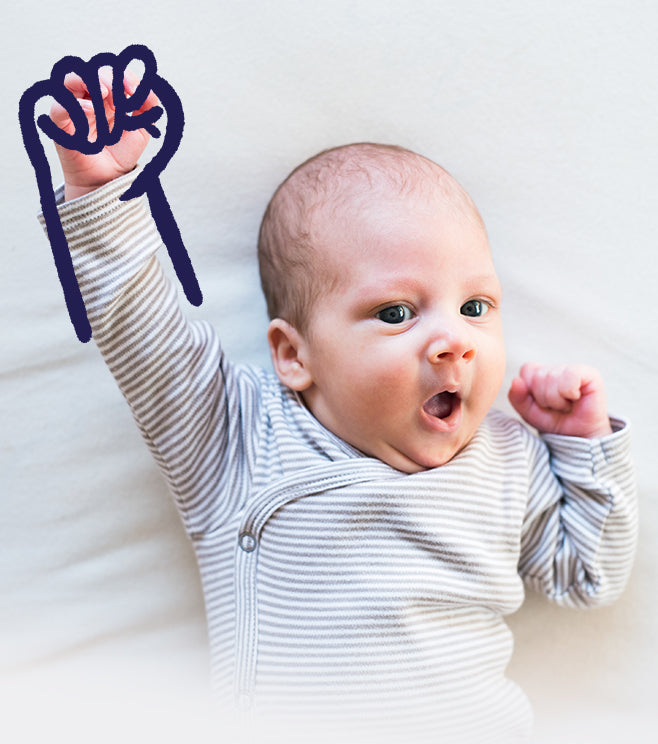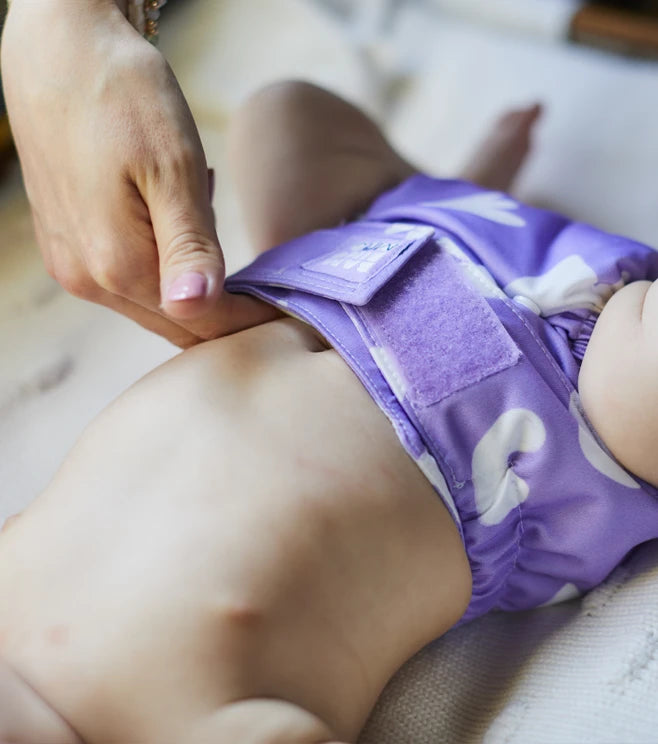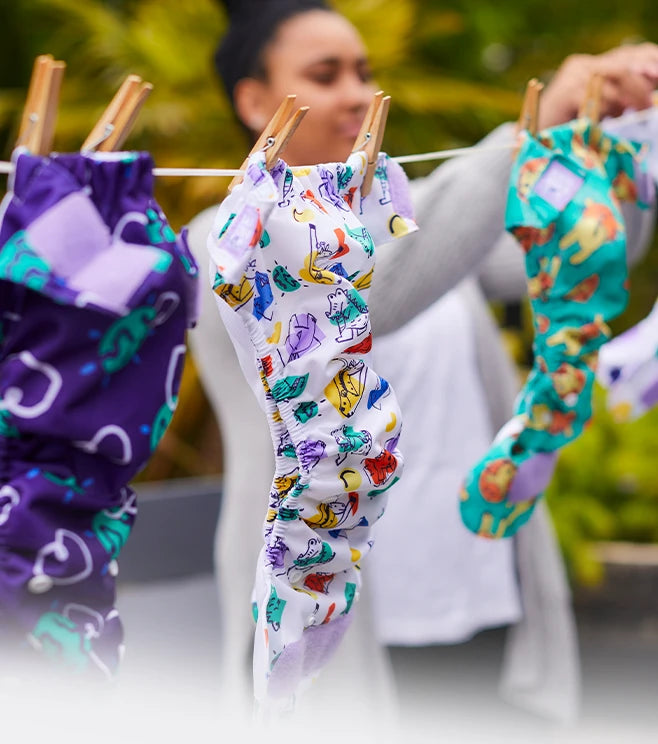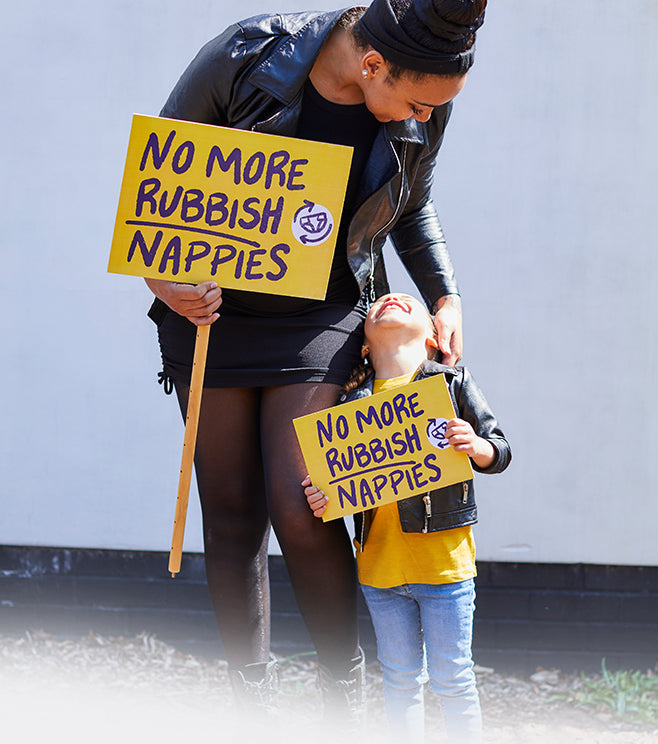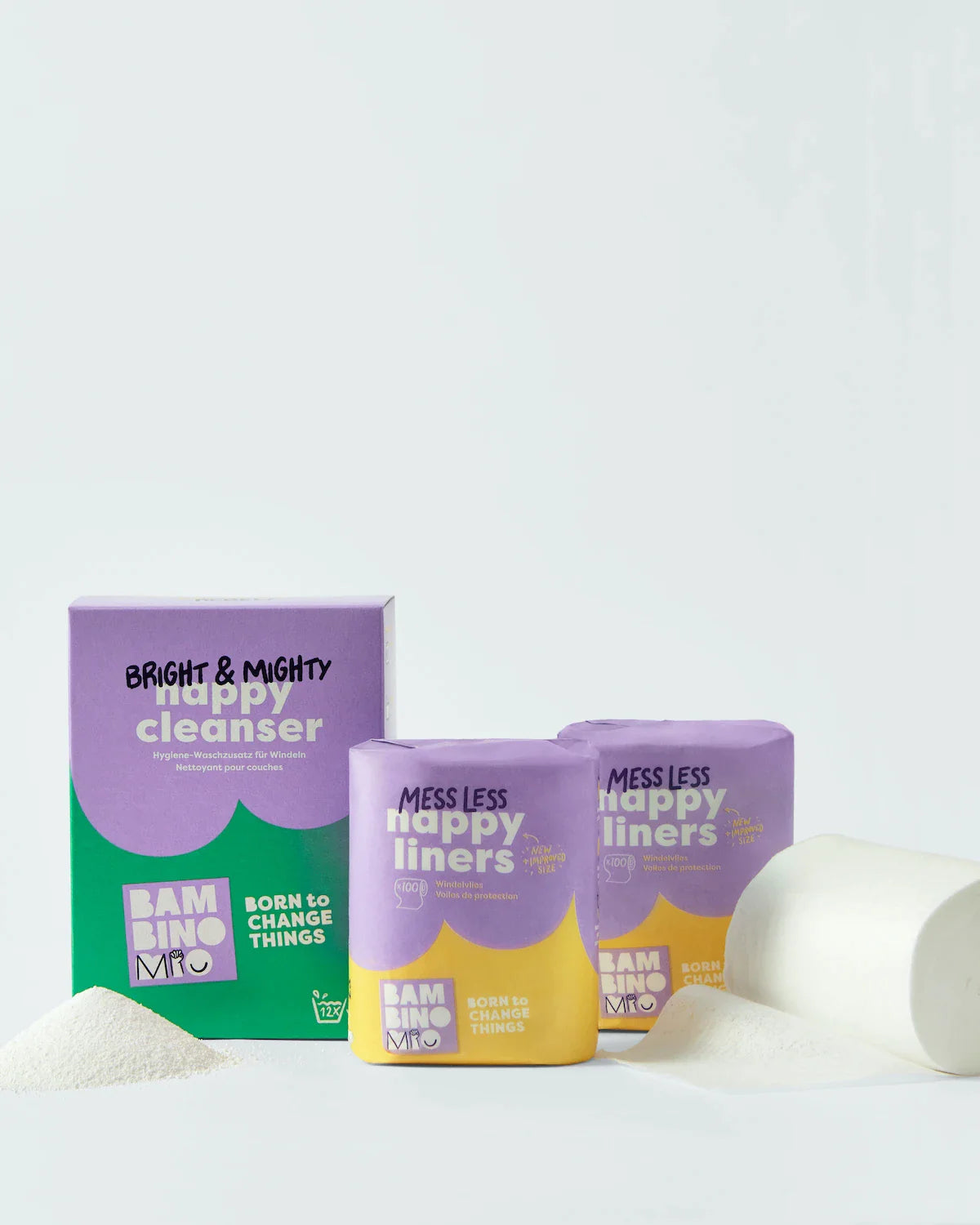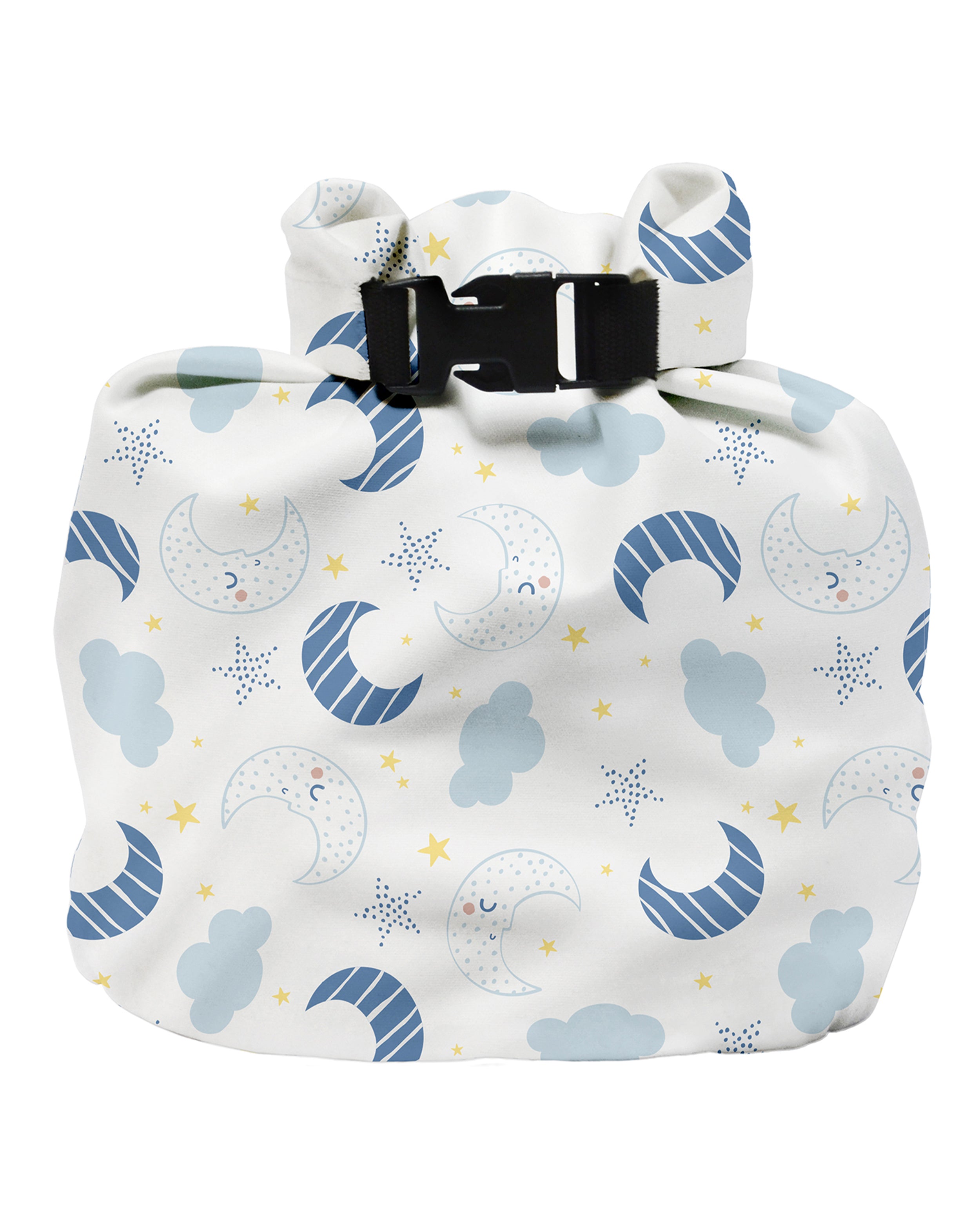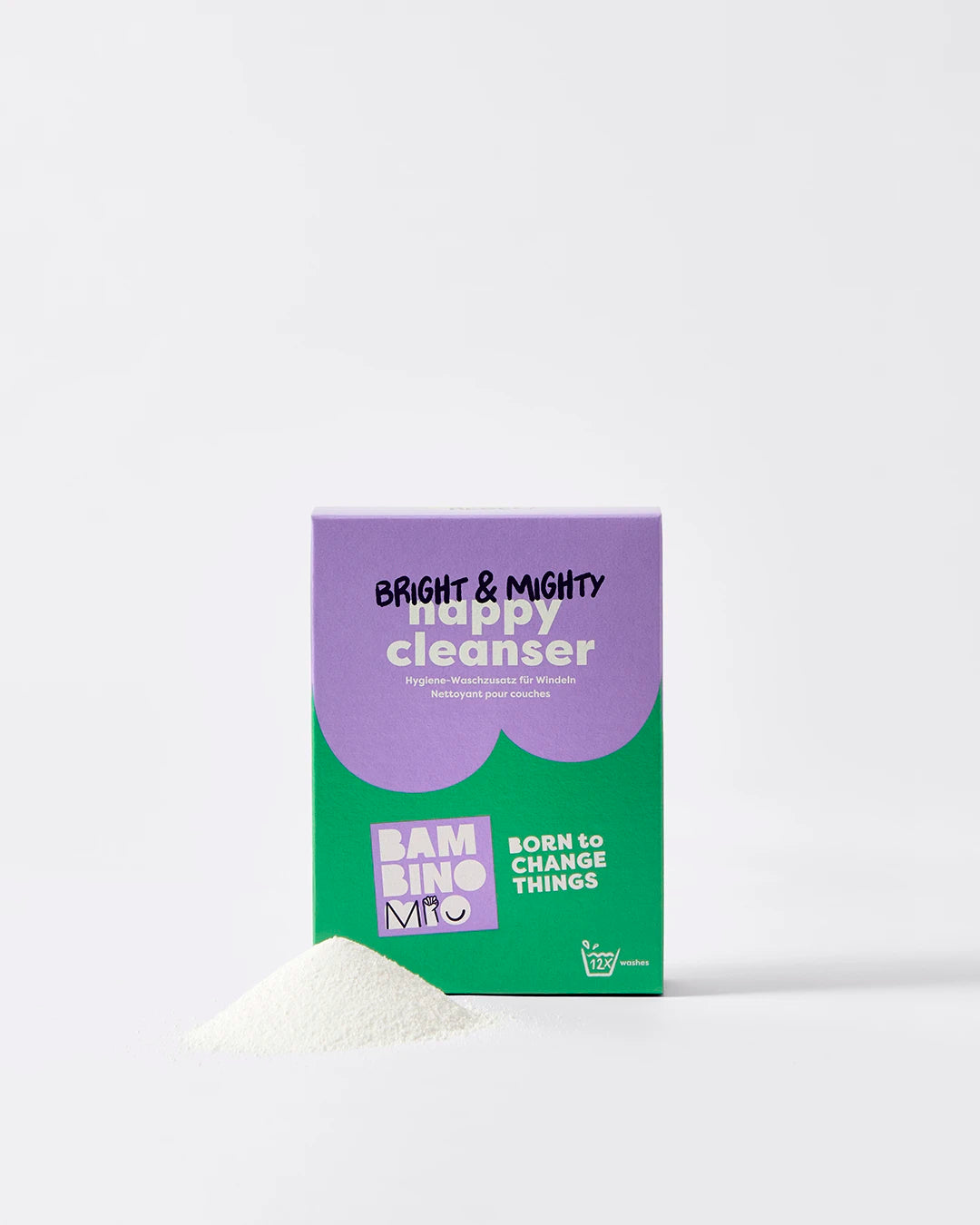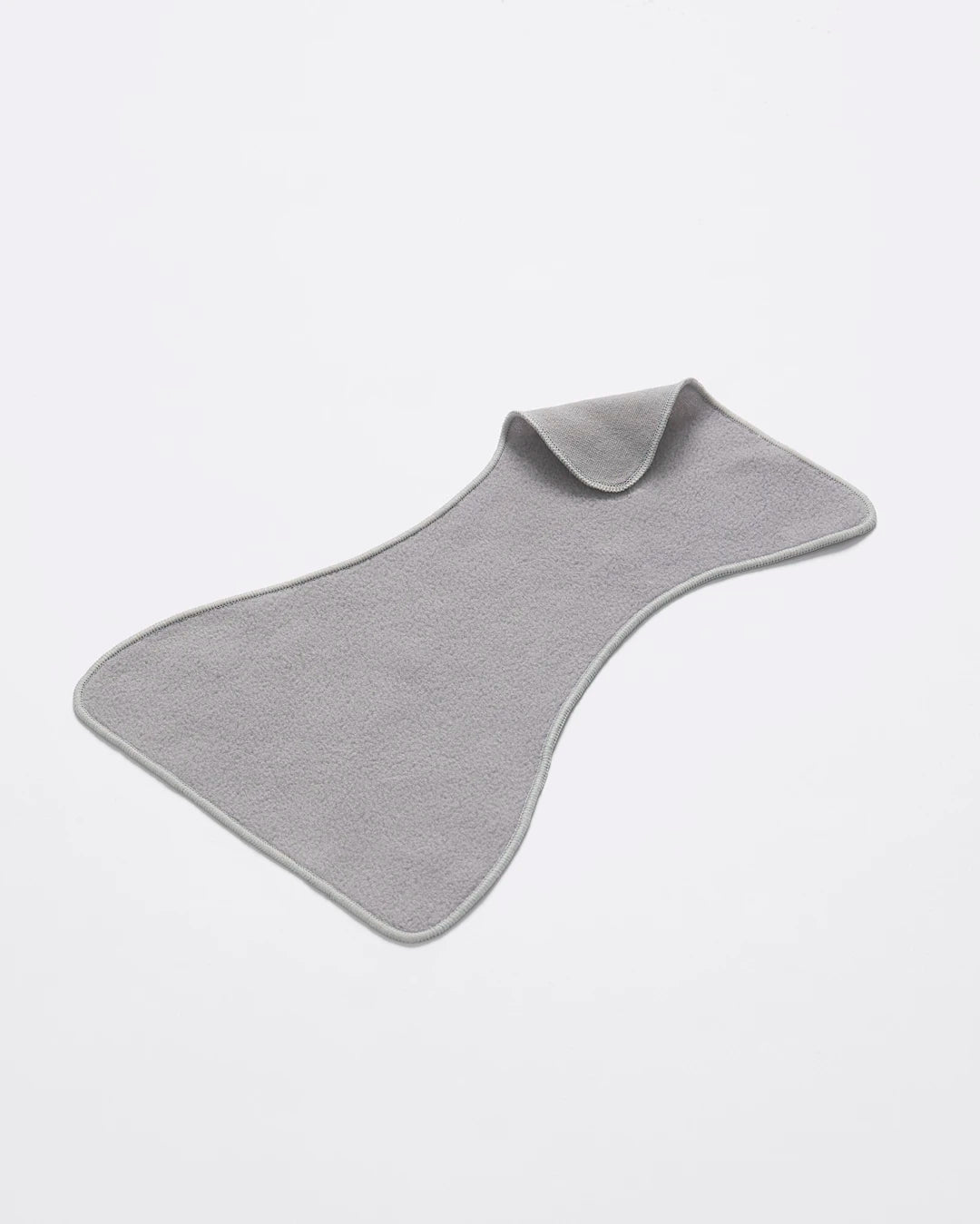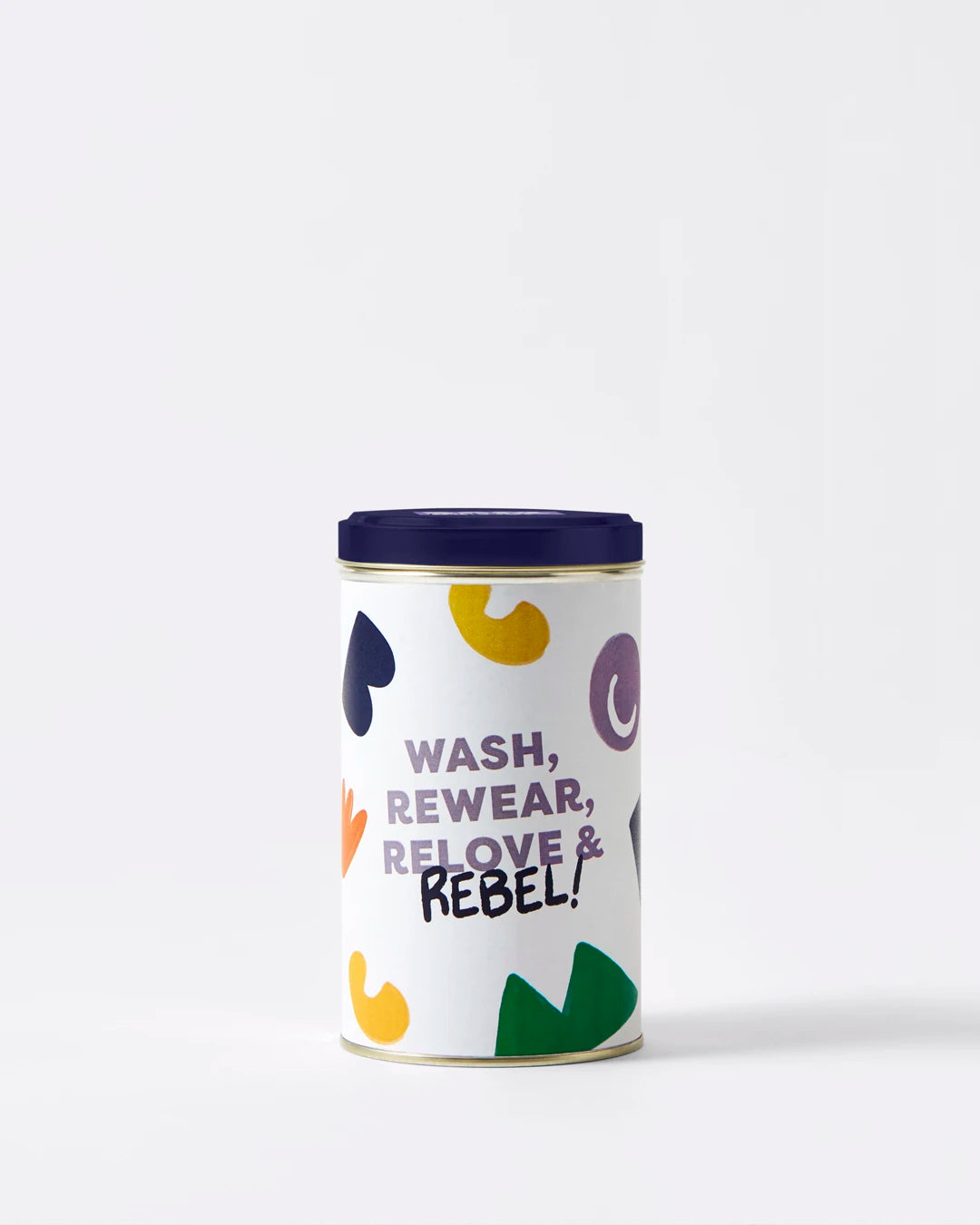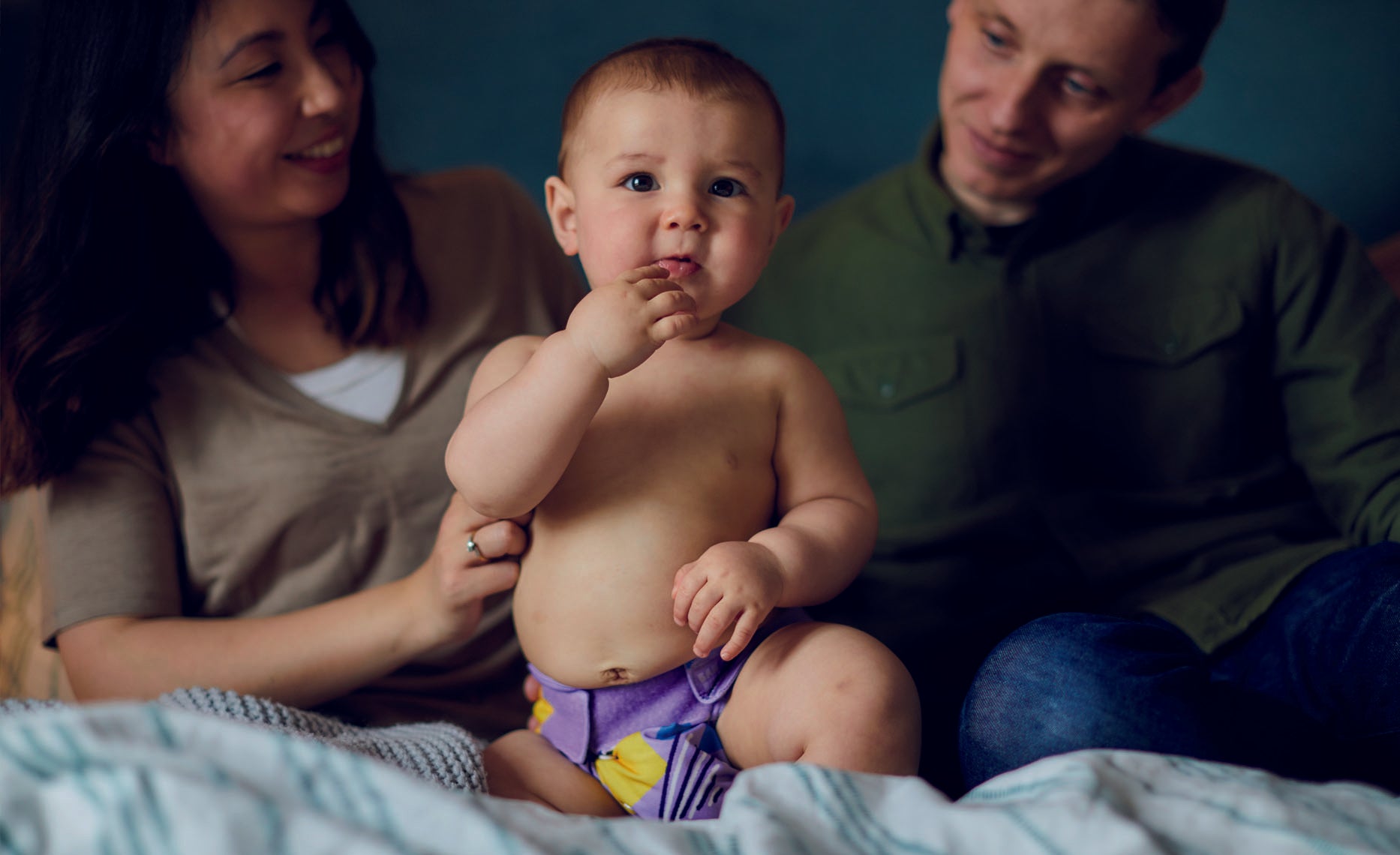Your Frequently-asked Questions About Nappy Rash
Share Options
- Bambino Mio
- 09 / 11 / 2023
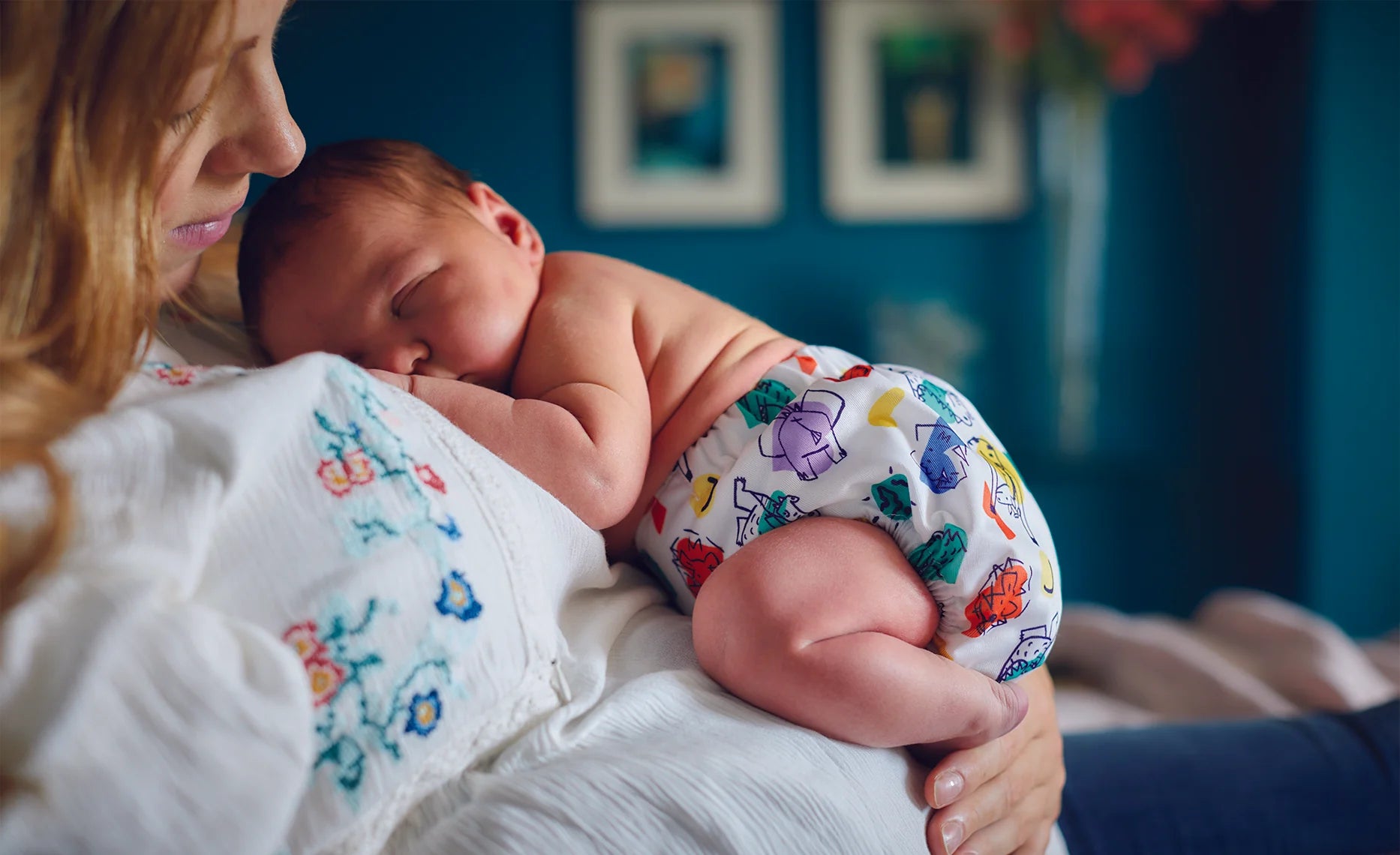
Inside this Article:
- How common is nappy rash?
- What does nappy rash actually look like?
- Is nappy rash serious?
- What causes nappy rash?
- What else can increase the risk of nappy rash?
- Diarrhoea
- Thrush
- Skin allergies
- Food allergiesPersistent or recurring nappy rash might be due to a food allergy or intolerance (6), so it’s best to seek help from your GP if you think this might be a problem.
- How can I treat my baby’s nappy rash?
- Can my baby go to nursery with nappy rash?
- How long does nappy rash take to heal?
- How do I prevent further nappy rash?
- When should I call a doctor about my baby’s nappy rash?
- Citations and References
Even if you’re using reusable nappies, your baby might still develop nappy rash (1). If your baby’s bottom is red and sore, it could well be a bout of nappy rash and while it can be uncomfortable, you can usually treat it at home.
You’ll probably have some questions about nappy rash, so we’ve collected the most commonly-asked questions about nappy rash here.
How common is nappy rash?
Nappy rash is very common indeed, with most babies under the age of two having it at least once in their lives.
Nappy rash can occur at any time while your baby is in nappies, but it’s most likely to happen when they’re aged between six and 18 months and least likely when your baby is a newborn.
What does nappy rash actually look like?
Nappy rash is quite distinctive. You’ll notice that some or all of the skin on your baby’s nappy area is:
- Red and inflamed - on black or brown skin it can present as grey, purple or darker brown discolouration
- Spotty or rough to the touch
- Hot to the touch
- Shiny and tight looking
If your baby’s nappy rash lasts for a few days, you may notice small blisters and even scales develop.
You’ll see nappy rash on your baby’s bottom, around their genitals and on the insides of their thighs. It sometimes starts as a few small red patches and spreads over the course of a day or so and sometimes it seems to appear suddenly.
Is nappy rash serious?
Mild nappy rash is more of an annoyance than a serious issue. It’s certainly uncomfortable and you might notice your baby crying suddenly for no apparent reason. This is often because they’ve just done a wee and it’s stinging their rash. You might also notice that your baby is more restless than usual and not themselves.
What causes nappy rash?
Even with really absorbent reusable nappies and with frequent nappy changes, your baby can still develop nappy rash because there’ll always be some moisture on their skin. It’s the contact with wee and poo that’s the main cause of nappy rash because bacteria convert the urea in urine (2) into ammonia, which affects your baby’s skin.
It might also be the case that your baby has particularly sensitive skin and even short periods of contact with wetness can cause inflamed skin. If a nappy isn’t fitting quite right it can rub against your baby’s skin, too, which can exacerbate things.
What else can increase the risk of nappy rash?
Diarrhoea
Diarrhoea can increase the risk of nappy rash as your baby’s poos come out “earlier”, which means there may be digestive enzymes (3) still present, which will “eat” the top layer of your baby’s skin.
Thrush
If your baby is on antibiotics, this can make thrush (4) more likely, so take extra care during the course and for a few days afterwards. Having oral thrush can cause nappy rash as some of the fungus can be passed out with your baby’s poo.
Skin allergies
If your baby has a sensitivity to the detergent you use to wash their nappies and reusable liners, or to a component in single-use baby wipes, then they may develop a contact dermatitis (5) breakout.
Stop using any products you think might be the culprit and switch to using reusable wipes with plain water instead of shop-bought disposables.
Food allergies
Persistent or recurring nappy rash might be due to a food allergy or intolerance (6), so it’s best to seek help from your GP if you think this might be a problem.
How can I treat my baby’s nappy rash?
You can treat mild nappy rash at home and it should start to clear up after two or three days:
- Change your baby’s nappy at least every two hours and as soon as you can after they’ve pooed
- Use a booster pad with your reusable nappies so that more moisture is wicked away from your baby’s skin
- Make sure your baby’s nappy fits properly as one that’s too tight will rub and if it’s too loose it won’t absorb wee effectively; our Revolutionary Reusables are suitable from birth to potty
- Use plain water and reusable wipes to clean your baby’s nappy area and remember to wipe from front to back, especially with girls
- If your baby’s skin is very sore, try dripping warm water from a flannel or from a squeezy bottle to clean them rather than wiping or rubbing
- Let your baby’s bottom air dry rather than drying with a cloth or towel
- Apply a very thin layer of nappy cream before you put on a clean nappy as this will soothe your baby’s skin and also form a barrier against their wee and poo
- Give your baby as much nappy-free time as you can to help their skin to heal - a changing mat or towel is fine for babies and a runaround in a warm room or garden works for older children
- Bathe your baby once a day with plain water - twice a day if it’s really necessary - and avoid bubble baths, oils, soaps or lotions
Can my baby go to nursery with nappy rash?
Yes, your baby can go to their childcare with nappy rash. If your baby goes to nursery, a childminder or to another carer, you should let them know they have nappy rash so they can check on their nappies and change them frequently.
How long does nappy rash take to heal?
Usually, mild nappy rash takes around three days to clear up if you treat it at home. You should always treat nappy rash, even if it’s mild and your baby doesn’t seem to notice it, as leaving it can make it worse or lead to a bacterial or fungal infection.
How do I prevent further nappy rash?
Nappy rash is so common that your baby will possibly develop it again, but you can reduce the risk by changing their nappy frequently, “airing” their bum as often as possible and using a reusables-friendly nappy cream.
When should I call a doctor about my baby’s nappy rash?
If you notice your baby’s nappy rash spreading or worsening, or if it’s just not clearing up despite home treatment, it’s time to call your GP. Your GP might offer your baby a medicinal cream to clear up the rash, or even antibiotics or antifungal medicine if they suspect these infections.
Citations and References
(1) National Health Service (NHS). ‘Caring for a Newborn Baby. Nappy Rash.’ 2023. Web. www.nhs.uk/conditions/baby/caring-for-a-newborn/nappy-rash
(2) National Health Service (NHS). ‘Urea.’ 2022. Web. www.southtees.nhs.uk/services/pathology/tests/urea
(3) Healthline. ‘What Are Digestive Enzymes and How do they Work?’ 2023. Web. www.healthline.com/health/exocrine-pancreatic-insufficiency/the-role-of-digestive-enzymes-in-gi-disorders
(4) National Health Service (NHS). ‘Health A to Z. Oral Thrush (Mouth Thrush).’ 2023. Web. www.nhs.uk/conditions/oral-thrush-mouth-thrush
(5) National Health Service (NHS). ‘Health A to Z. Contact Dermatitis.’ 2023. Web. www.nhs.uk/conditions/contact-dermatitis
(6) National Health Service (NHS). ‘Food Allergies in Babies and Young Children.’ 2021. Web. www.nhs.uk/conditions/baby/weaning-and-feeding/food-allergies-in-babies-and-young-children

